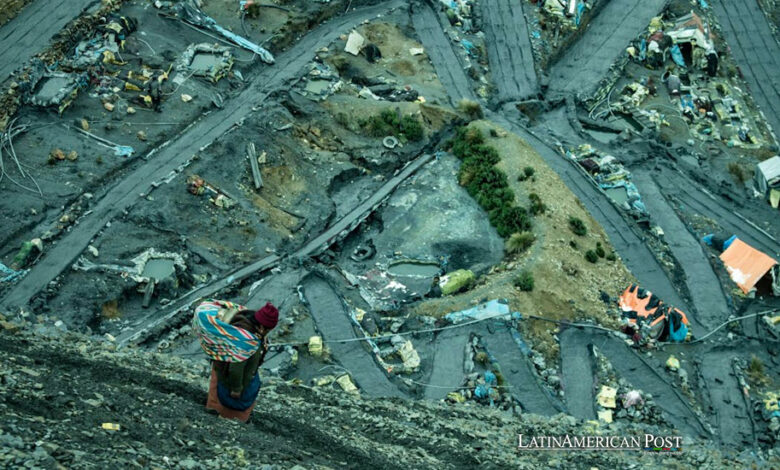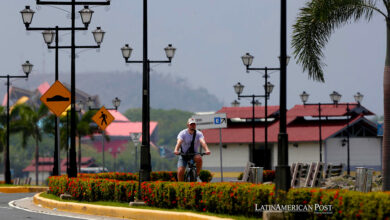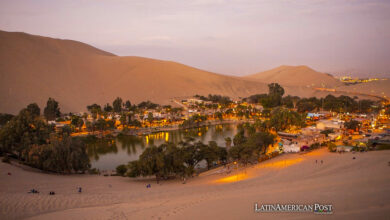City of Gold, City of Peril: Life at the Edge in Peru’s La Rinconada

High in the Peruvian Andes, where the air thins and the wind bites, a harsh reality tarnishes the golden dreams of La Rinconada, the world’s highest permanent settlement. This ramshackle mining town, perched at a staggering 5,100 meters (16,700 feet), is a crucible of challenges. In this place, altitude sickness chills you to the bone, violence flares over glittering flecks of gold, and toxic fumes poison the very air you breathe.
At an altitude where the air is thin and the environment unforgiving, La Rinconada, Peru, emerges as a town shaped by its extreme conditions and the human will to survive and thrive against all odds. Sitting at 5,100 meters (16,700 feet) above sea level, this town is not only one of the highest inhabited places on Earth but also one of the most stark examples of the complex interplay between human ambition and the natural environment.
Living with Hypoxia
The residents of La Rinconada live with hypoxia daily— a dangerous condition where the body struggles to obtain sufficient oxygen. Chronic mountain sickness is rampant; its symptoms include severe headaches, dizziness, and fatigue, hamper the ability to perform even mundane tasks. Yet, these physical challenges are just a fraction of the difficulties faced by the inhabitants.
La Rinconada’s transformation into a bustling mining town began with a contemporary gold rush, attracting thousands from across Peru and neighboring countries. These fortune-seekers envisioned a city ripe with opportunity but found a reality marked by chaos and hardship. With minimal police presence and almost no governmental structure, La Rinconada has become a modern-day Wild West. Disputes over mining claims and theft are commonplace, often resolved by fistfights or, in more severe cases, lethal violence. Compounded by widespread alcohol abuse, these factors create a volatile and dangerous atmosphere that defines everyday life.
The mining operations themselves are fraught with hazards. Miners, including many untrained and ill-equipped, descend into precarious tunnels daily. These makeshift mines lack safety regulations, making every trip underground a potential death trap. Accidents and cave-ins occur with terrifying regularity, while exposure to toxic substances, including silica dust, compounds the risk, leading to chronic respiratory and other health issues.
Mercury Contamination
Mercury usage in gold processing further exacerbates the town’s problems. This heavy metal, essential for separating gold from other elements, is handled with little care for environmental or human safety. The result is widespread contamination; mercury seeps into the local waterways and soil, poisoning the ecosystem and the population. The neurological and developmental impact of mercury exposure is severe and often irreversible, affecting generations of residents.
The story of La Rinconada resonates with similar narratives across Latin America, where the exploitation of natural resources frequently overlooks the well-being of local communities and the environment. From Bolivia’s mining towns to Venezuela’s oil fields, the pursuit of natural wealth has often led to significant social and ecological costs. Economic development is desperately needed in these regions, yet it comes at a high price, and the benefits are unevenly distributed.
Despite these overwhelming challenges, the spirit of resilience in La Rinconada is palpable. Many residents, driven by the dire economic circumstances in their home regions, continue to cling to the hope of finding gold and securing a better future. They adapt to extreme altitudes, colds, and socio-economic instability with a stoic acceptance, and their lives are a daily testament to human endurance.
Looking ahead, La Rinconada stands at a crossroads. Significant changes are necessary for the town to have a sustainable future. Improved mining practices, enforcement of safety regulations, and environmental restoration efforts are crucial. Equally important is establishing a more robust law enforcement presence to curb violence and theft.
A Global Responsibility
The global community, too, has a role to play. As awareness of sustainable and ethical mining practices grows, companies and governments are under increasing pressure to prioritize the health of people and the planet in their pursuit of economic gains. La Rinconada could serve as a crucial case study of how high-risk environments can be managed and transformed to safeguard human and environmental health.
Also read: Ana Estrada: Peru’s First Person to Access Euthanasia
Ultimately, La Rinconada vividly illustrates the lengths to which individuals will go in the pursuit of wealth and the profound costs associated with such endeavors. It reminds us of the human capacity for endurance but also of the urgent need for compassionate and sustainable approaches to economic development. In this high-altitude Peruvian town, the quest for gold continues to test the boundaries of human resilience and ethical responsibility.





